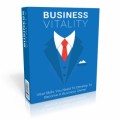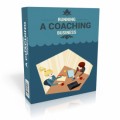Sample Content Preview
Module 1:
Overview of the Bulletproof Branding Course…
Since we’re just getting started, Module 1 doesn’t have any planning sheets or checklists for you to complete.
But that doesn’t mean you don’t have an assignment. Your assignment is to grab your favorite beverage, sit back and continue on with the course… because things are about to get really interesting!
Module 2:
The DNA of Branding
You just discovered that branding is really about conveying a feeling to your prospects and customers. However, until you actually start examining brands for yourself, this concept may not seem all that clear to you.
As such, for this module we’d like you to go through and really look at some of the most popular brands in the world. Below you’ll find a few suggestions to get you started. However, you can do this exercise with any brand – so if you’re living in a place where the following brands aren’t familiar, then choose your own brands and complete the worksheet.
What you’ll do is deconstruct three brands.
Here are our suggestions:
Mountain Dew (http://mountaindew.com)
Aunt Jemima (http://www.auntjemima.com)
Porsche (http://porsche.com)
Then answer the following questions about the brand:
1. What is the logo?
2. What colors are used in the logo?
3. What colors are used on the website?
4. What is the slogan?
5. What kinds of photos are used on the site?
6. What “flavor” is the text? (E.G., Is it professional? Conversational and friendly?
Educational? Full of slang? How would you describe it?
7. Based on what you know of the brand (including just based on what you see on the website), who is their target market? What are their ages? Gender? Where do they live? What do they like to do? What is their income bracket?
8. Based on the logo, slogan, colors and everything else you see on the site, describe the overall “feeling” you get. In other words, what feeling is the overall brand trying to convey?
9. Do you think the brand is conveying the right message? If not, what feeling do you think it should be conveying?
10. If you were hired to rebrand this product, what would you do? How would you change the look and feel of the logo, slogan and overall
Module 3:
Dissecting Your Brand
Note: Since we introduced the concepts in this module, we’ve inserted the related
planning sheets here. However, you’ll want to wait until you watch the next module before
you actually complete the following planning sheets.
Once you have a good understanding of developing your brand, then be sure to return to complete these planning sheets.
Overall Branding Planning Sheet
1. What kinds of feelings would you like your customers to feel when they’re using your product?
List as many as you can think of below:
2. Check out your top 10 competitors.
Now list what their brands are conveying:
Brand Feeling Conveyed
3. Now list your top three choices as to what feeling you’d like YOUR brand to convey.
4. Finally, draft a few ideas regarding how to convey this feeling throughout our business. This includes:
What kind of logo would convey this feeling?
What colors convey this feeling?
What sorts of illustrations convey this feeling?
What font face best convey this feeling?
What style of content conveys this feeling (e.g., conversational, warm, friendly,
educational, plain-spoken, etc)?
Brainstorm all the other ways you can convey this feeling throughout your site:
Product Naming Planning Sheet
You’ve learned about the three approaches to branding:
Overall branding (like the “Chicken Soup” series of books).
Product branding (like PepsiCo Inc’s individual branding of its beverages).
Hybrid branding (such as Ford Mustang)
1. Based on what you learned about the advantages and disadvantages of these three approaches, which one are you going to use for your business?
2. What feeling do you want to convey with your brand?
3. Brainstorm at least two dozen possible brand names for your product:
Product Packaging Planning Sheet
1. What kind of packaging do you need for you product? In other words, is this a physical product where you need actual packaging? Is it a book? Or is it a digital product, where you just need to create a representational graphic of the packaging (such as an ecover graphic)?
2. Brainstorm – based on your branding, what colors would work best on your packaging?
3. Brainstorm – what type of text do you need to including on your packaging?
Product Positioning
Please note that you’ll find a planning sheet in the next module that will help you develop your unique selling position.
Pricing Planning Sheet
1. List at least the top 6 of your closest competitors below, what they charge for a similar product or service, and how your product or service differs from theirs. The point is to get an idea of what others are charging, especially in relation to whether your product or service offers more or less value for the money…
Competitor Price How does their product differ from yours?
2. If you’re creating something brand new in your niche, then you won’t be able to directly compare other similar products or services. In that case, ask yourself these questions:
A. Is this a high-end or low-end product and market? In other words, what kind of pricing do customers expect?
B. How are similar products or services in other niches priced?
C. How much value does your product or service provide? Describe how it benefits people, and how much that’s “worth” to customers.
3. Based on the above, what is your estimated price range for this product or service?
Penetration Planning Sheet
1. How does your branding affect your handling of customer service inquiries? If you hire customer service representatives, how will you train them to accurately reflect your brand in their communications with prospects and customers?
2. How will you reflect your brand on your blog? What kind of content best conveys your brand?
3. How will you reflect your branding in your advertisements?
4. What kind of advertisements will specifically help you build brand recognition and trust?
Module 4:
Developing and Refining Your Branding Formula
USP Planning Sheet
1. Before you can position your product, you need to understand how your competitors are positioning their products. Write down your top 10 competitors below, along with a note about how they’re positioning themselves:
Competing Brand What is their USP?
2. List as many factors as you can think of that are important to your customers and prospects. This includes price, guarantee, how the product was made, customer service, etc.
3. Compare the list of what your customers and prospects want with what your competitors are already doing. Now list as many as USP possibilities as you can think of that wouldn’t overlap with what your competitors are already doing. That is, how are you different and better than your competitors?
4. Write down your top 3-5 USP concepts here:
5. Now take each of the above concepts and turn them into a succinct slogan of just a few words.
For example, Domino’s Pizza knew they wanted to position themselves as the pizza delivery company that could get the pizza to the customers quickly. If they said, “We’re the pizza delivery company that can get the pizza to you quickly so that’s always hot and fresh” … well, that would have been too clunky. So what they originally did was first strengthen the USP by turning it into a guarantee. And then they boiled it down to just a few words: “30 Minutes or It’s Free.”
Now you try – see how few words you can use to convey your slogan.
Module 5:
Branding as a Catalyst for Business Growth
It’s time to pull together everything that you’ve learned in this course. Below you’ll find an overall checklist that you can use as you walk through the process of developing and refining your branding strategy…
Other Details- 2 Ebooks (PDF), 27 Pages
- Videos (MP4)
- Year Released/Circulated: 2017
- File Size: 260,347 KB
License Details:
[YES] Can learn from
[NO] RESELL OR GIVEAWAY













